In this digital age of globalization, it is difficult to come up with a unique business idea without finding out that the “wheel” has already been invented, or that somebody else on the globe had the “Eureka!” moment just about the same time you did.
So, if what you do is something done by many, how do you achieve the competitive advantage? The answer is fairly simple – it’s how you do it! Unless you are Google or SpaceX, managing your project portfolio of strategic initiatives, with emphasis on risk and investment management, is crucial for business success. But do all companies feel fueled to make use of PPM?
The current standing with project portfolio management (PPM)
As surprising as it may sound given the abundance of resources and available information, around 45% of organizations admit they don’t fully understand the value of project management and the direction their company needs to head in for a specific project, even though healthy PM practices significantly boost the success rate of strategic initiatives of the company. This data is twice as surprising if we consider the fact that 89% of high performing organizations use project portfolio management in their day-to-day work.
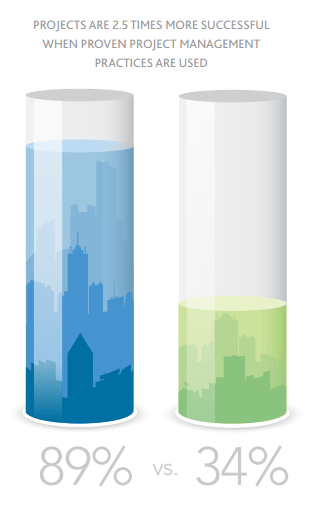
(source: p3mglobal.blogspot.com)
If we dig it a bit further, we will discover yet more surprising statistics. As it turns out, around 31% of companies still rely on paperwork to streamline their projects and manage their processes, investment and risks. What are the chances of success in this matter if 95% of companies in the digital world have already migrated to some kind of cloud technology?
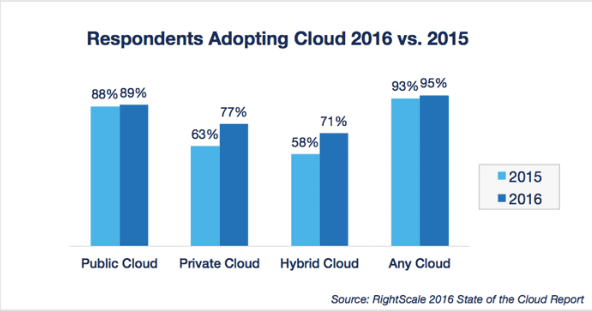
(source: rightscale.com)
At the same time, according to Project Management Institute’s statistical analysis, more than 70% of companies also have a PPM practice implemented at the company.
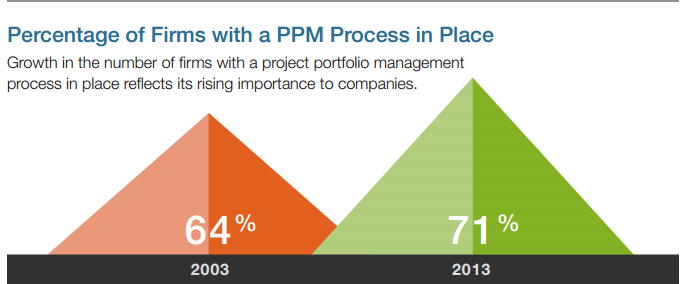
(source: slideshare.net)
If you are at the low end of these stats, it’s probably high time to consider the benefits of having project portfolio management practices implemented in place.
Afraid to invest in PPM? Some Statistics
We know you have lots of “but” remarks on your mind – bad news on turbulent economy and worse news of the Brexit and employee cuts in major companies probably scare the hell out of managers, restricting their motivation to invest in PPM for fear of loss. But it seems that failing to invest in portfolio management, for risk cuts and better visibility into the whole project, may be much worse than the worst case scenario of economic hardships and economic downfall.
It turns out that organizations that invest a portion of their budget into project management and portfolio management solutions lose 13 times less money because they hit their strategic initiatives more successfully.
When these solutions have matured enough within the company, absorbing themselves into the DNA of the company, things heat up even more.
“Portfolio management isn’t something you ‘do,’ it’s something you are.” Andy Jordan, PMP, President, Roffensian Consulting Inc
These companies complete up to 40 percent more of their programs successfully. Less failure translates into less financial loss, and, consequently, overall better project performance.
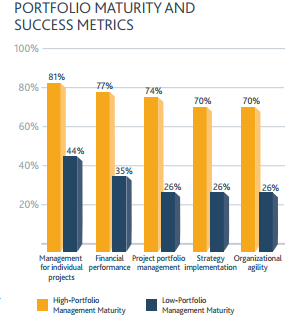
(source: pmi.org)
So, why not consider this “forward-thinking” for your own company? Let’s look at the advantages project portfolio management (PPM) can bring to the table for your business.
The Value of Project Portfolio Management (PPM) solutions
1. More insightful decision making
Businesses today need good data, and this is why the visibility ensured by PPM solutions is so handy. Project portfolio management ensures high levels of visibility both from a strategic and a tactical perspective, covering the top-down and the bottoms-up of the projects.
“Project portfolio management, often referred to as simply portfolio management, is forward looking. If you can’t see the future of your organization by looking at your portfolio, you have no chance of getting there.” Mark A. Langley, CEO, PMI
The insights into past project metrics improve the predictive analysis for better resource utilization and risk management, as well as help in cutting off projects that lag behind or do not contribute to the corporate objectives.
2. Significant risk minimization
In the global economic and digital reality, any business is exposed to numerous hazards of the trade, ranging from financial and governance risks to failure in resource utilization and misdirected efforts. Statistics show that 30% of projects fail solely because of an undefined risk.
A good PPM solution helps businesses identify wayward projects early on, compare the benefits vs. costs of cancelling them, reducing the risks of a total fiasco to the minimum. These statistics show how companies using PPM for risk management increase their success rates as compared to the ones who don’t:
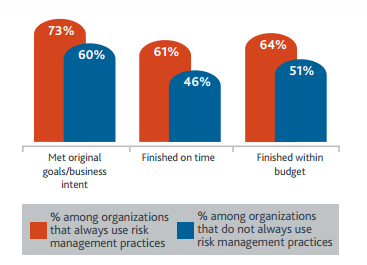
(source: pmi.org)
There’s an overall 13-15% increase in overall project success, which includes meeting the business goals, as well as staying on time and on budget.
3. Boosting resources
Resources are the most crucial aspect of any project. Having a successful PPM solution in place helps to reduce project costs, by means of eliminating duplicate effort.
Statistics reveal that companies using PPM solutions have a significantly higher human resource performance rate as compared to ones that fail to use any portfolio management solutions altogether.

(source: pwc.com)
“In today’s competitive business environment, a portfolio management process improves the linkage between corporate strategy and the selection of the ‘right’ projects for investment. It also provides focus, helping to ensure the most efficient and effective use of available resources.” –Lou Pack, PMP Senior Vice President ICF International
4. Setting corporate goals
There is nothing worse than the state when your employees have a vague idea as to the direction the company is heading in. Add the days companies spend in off-site meetings to define or re-define organizational priorities, goals and strategies, and here we have a complete mess.
PPM ensures that every employee fully understands the company goals and the steps to achieve them by introducing clear history, statistics, demands and roadmaps.
The Takeaways
Overall, this is just a sneak peek into the added value of project portfolio management solutions. All the initial steps of PPM – project selection, project prioritization and reprioritization, portfolio monitoring, assessment, corrective action management and project termination make sure no resources are wasted, no dead-end luggage is carried along by the company and there is an overall higher success rate for each project.
Failing to implement these practices may make your business less competitive. Remember, there is a lot to bring to the table if you want to be that one company that does it all better.
We’re all in a huge pool of competition, so second chances to make a project work are becoming rare: PPM may be the right way to make sure you don’t have to run after a train that’s already gone!
Follow us


